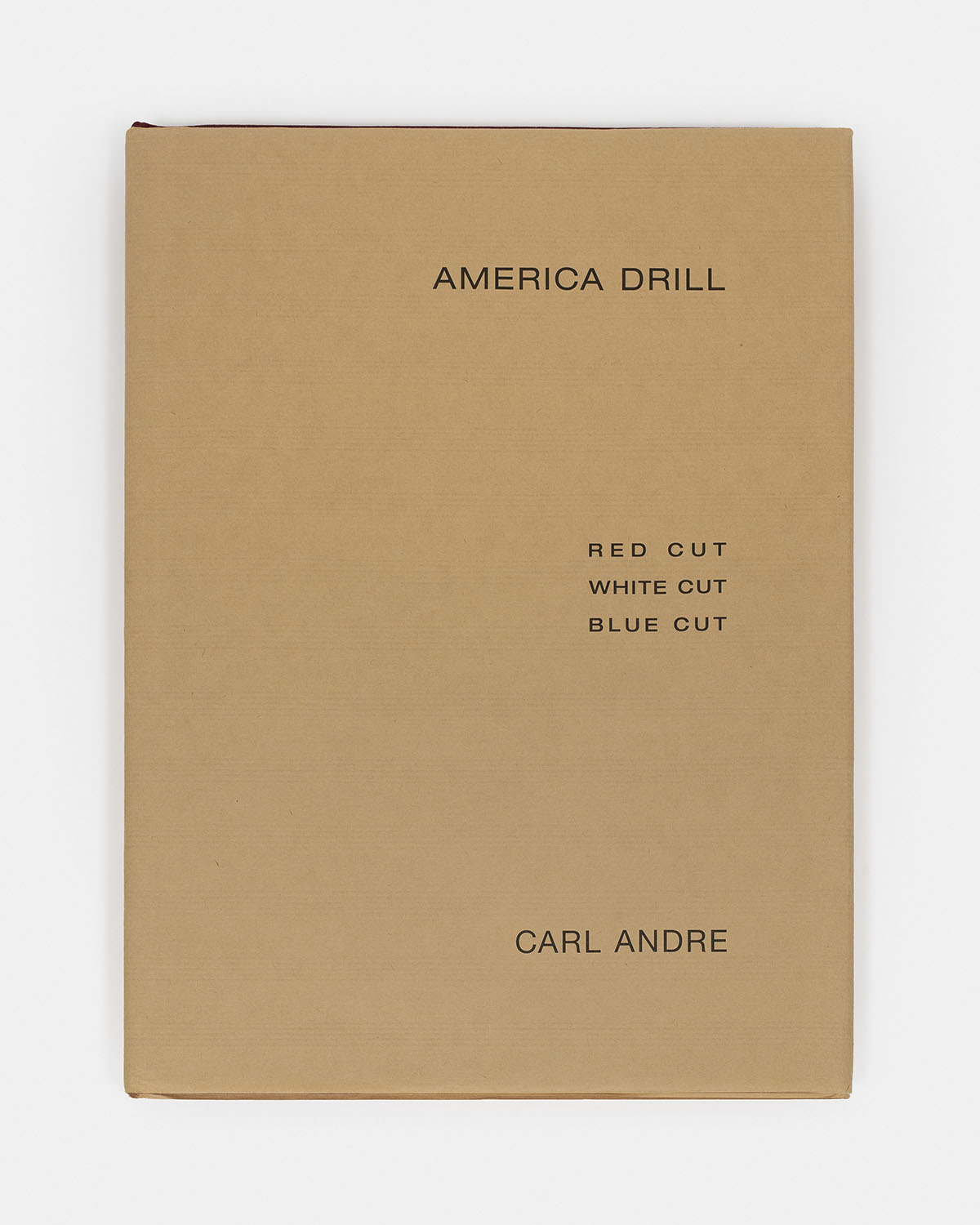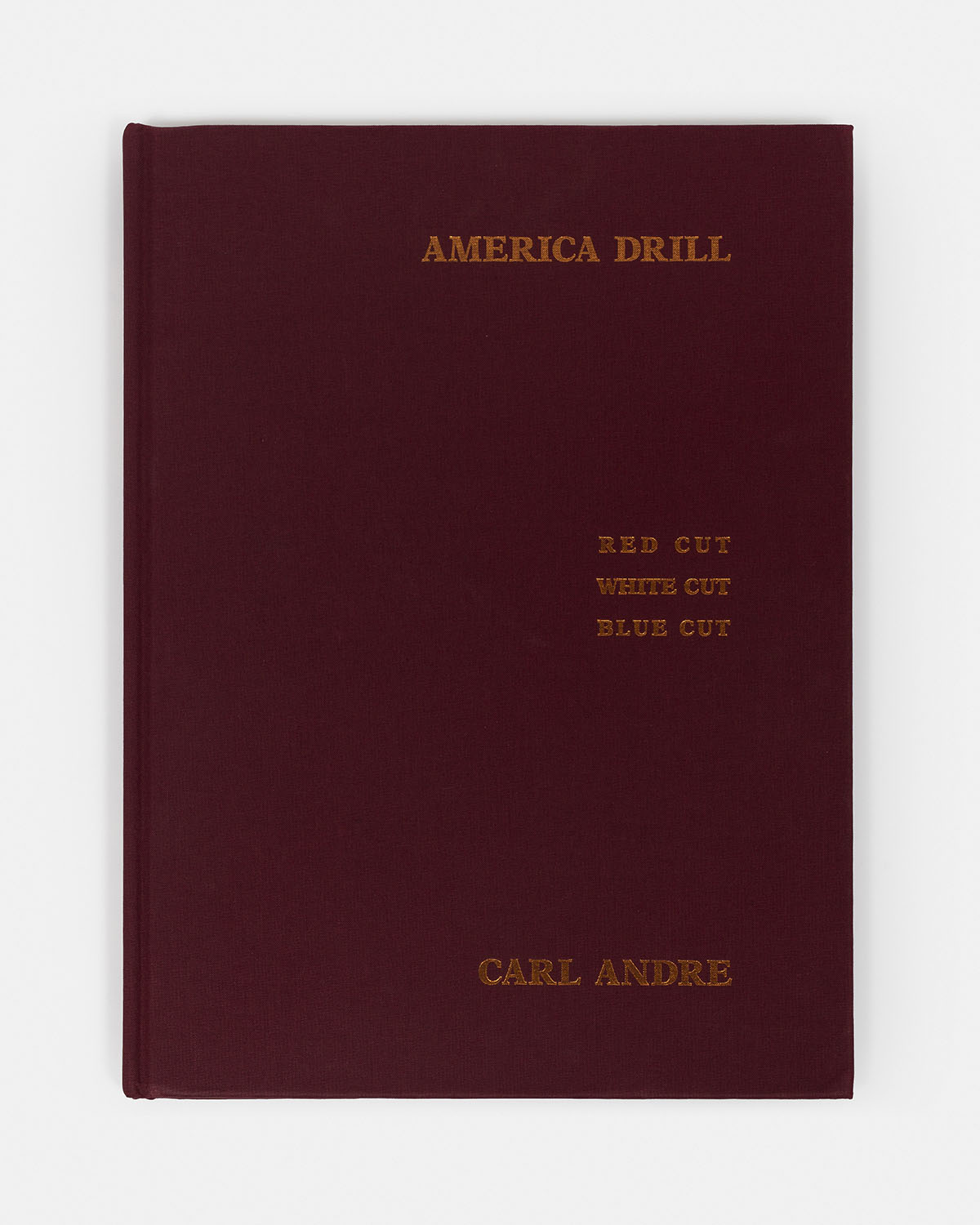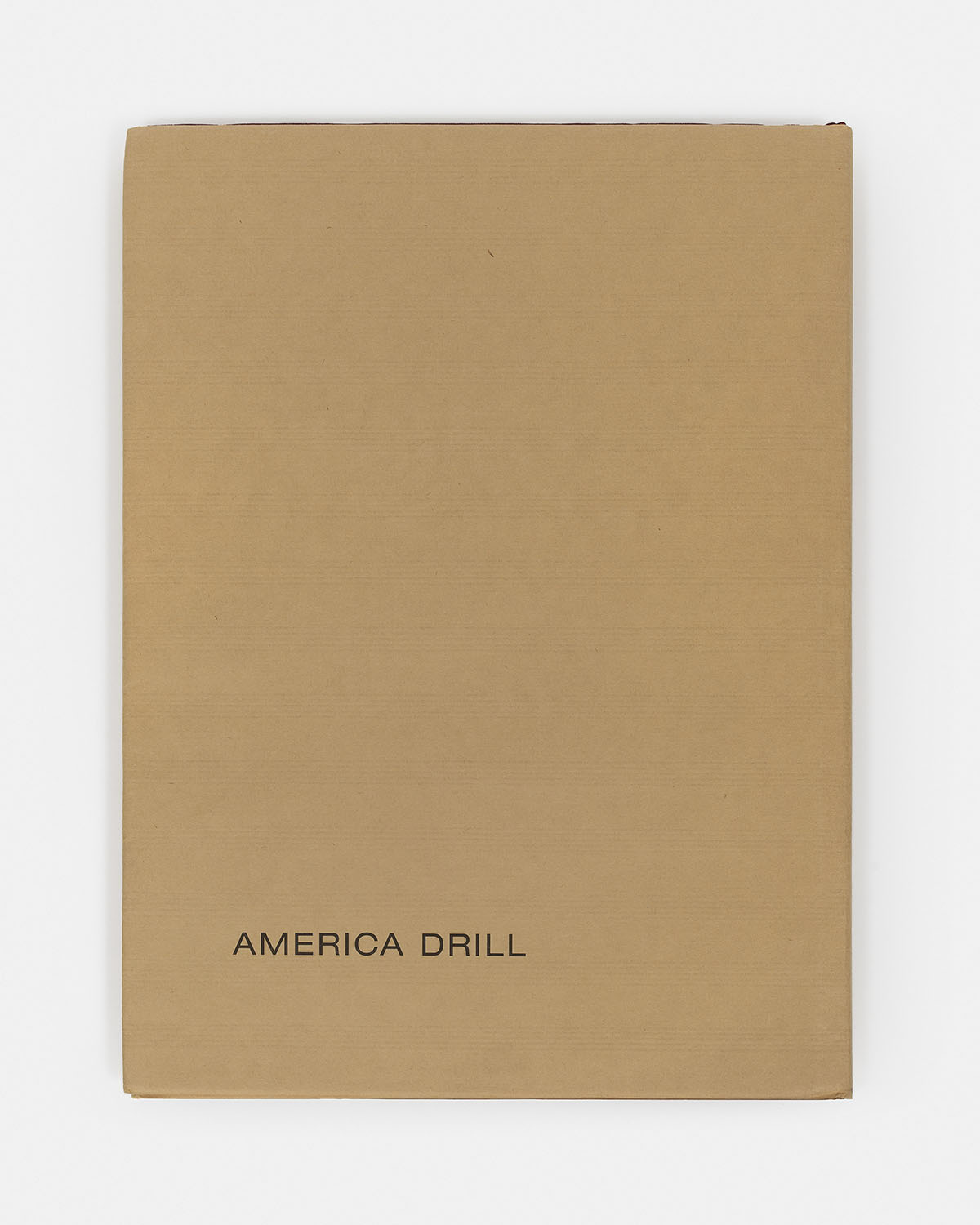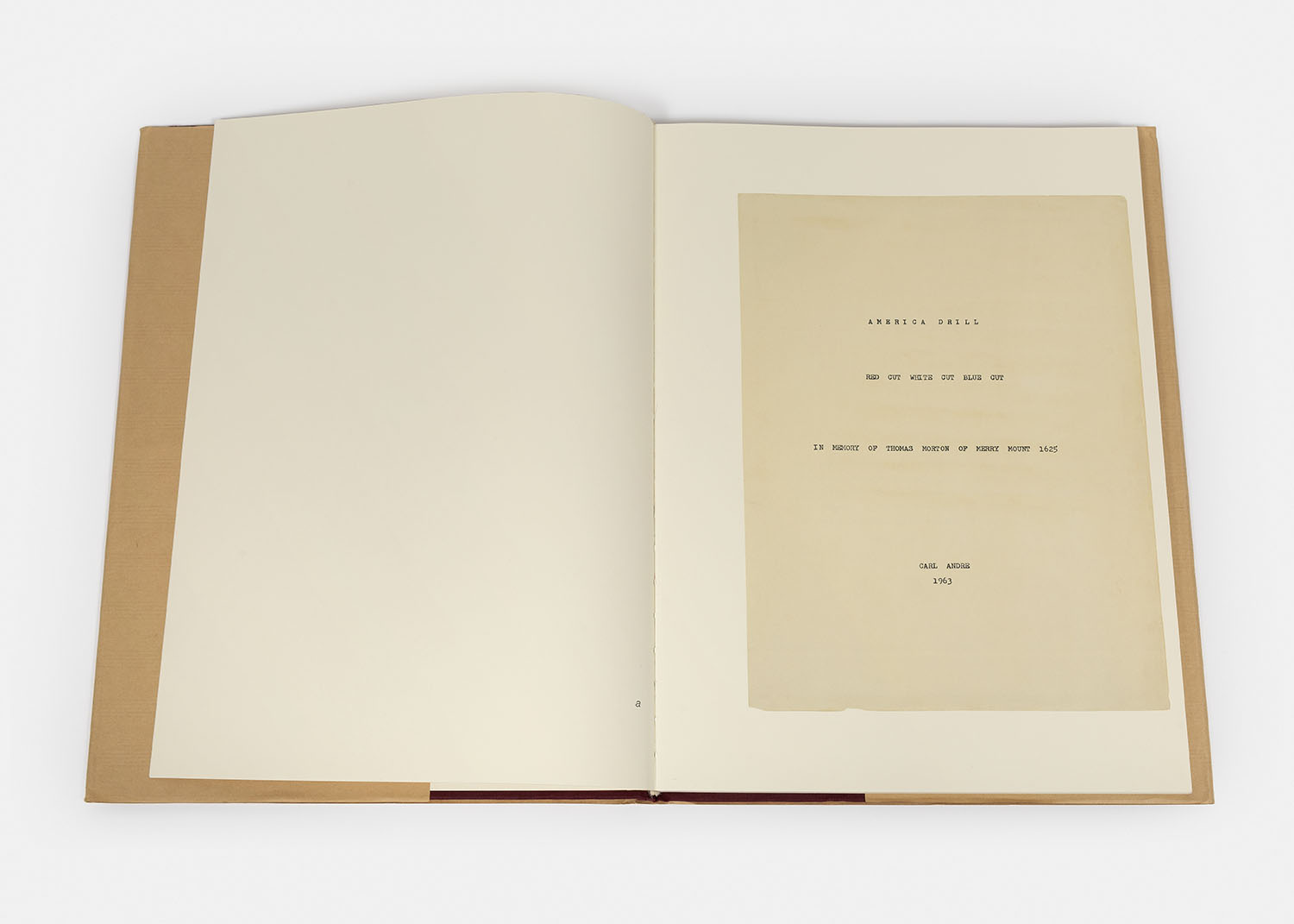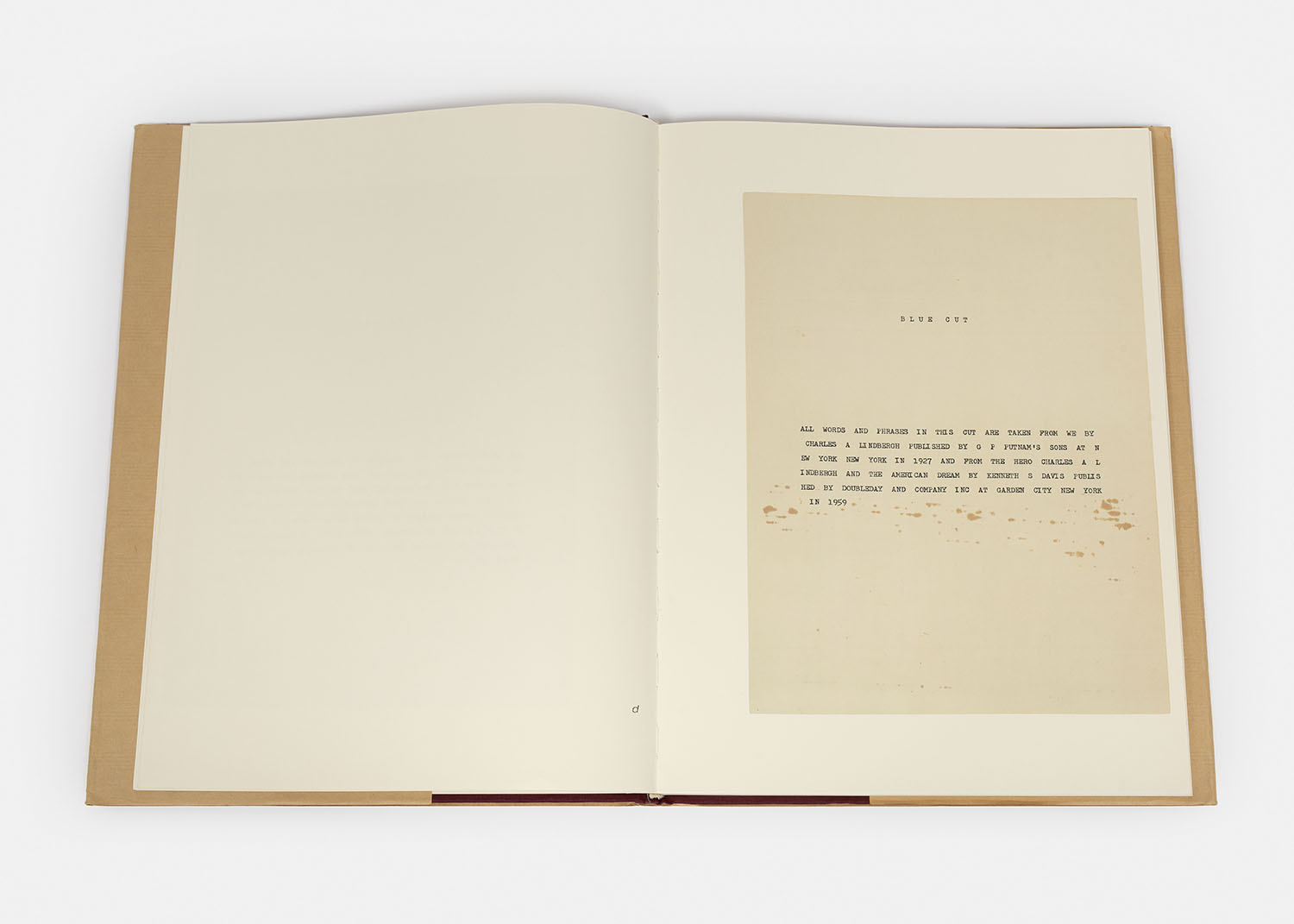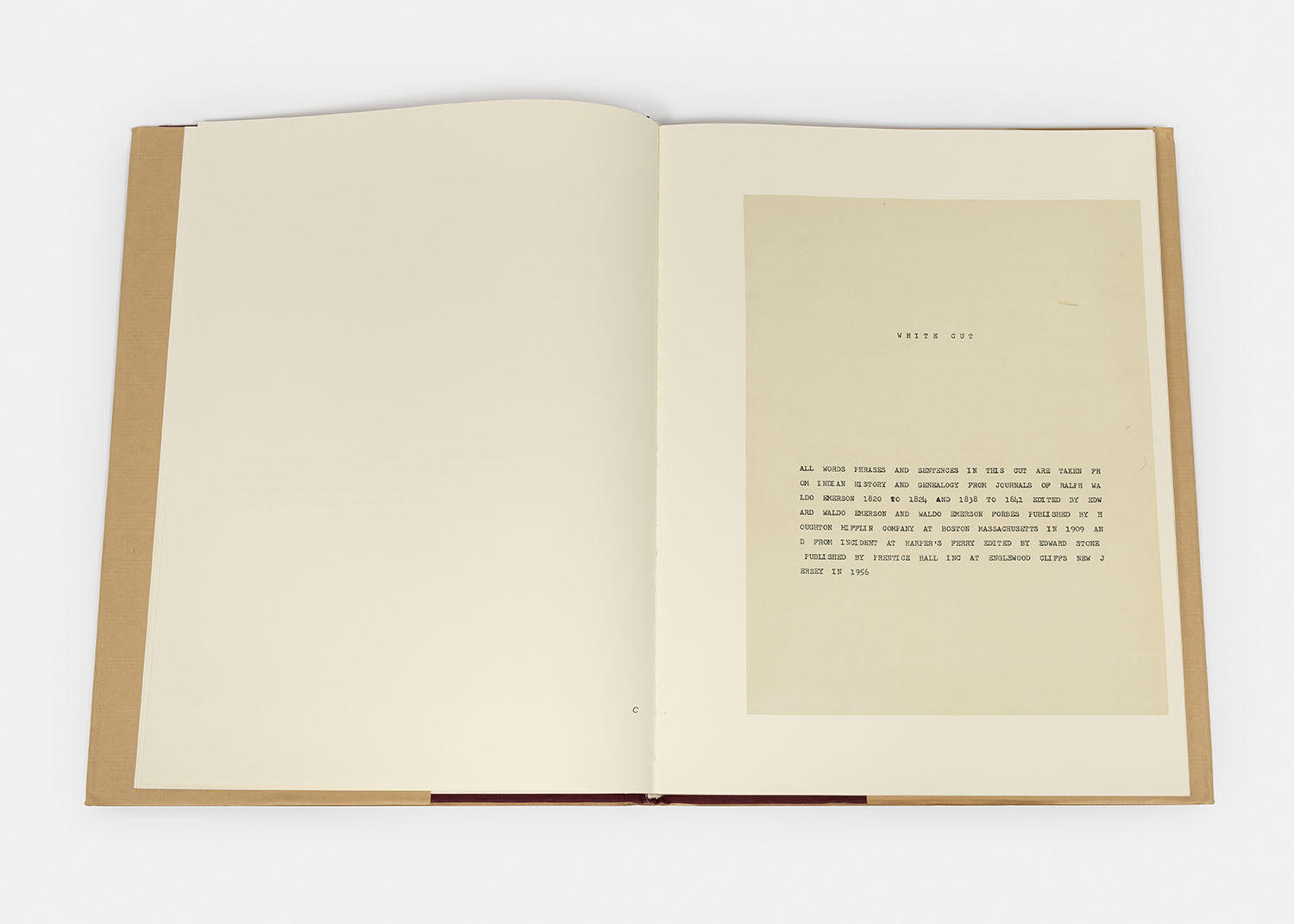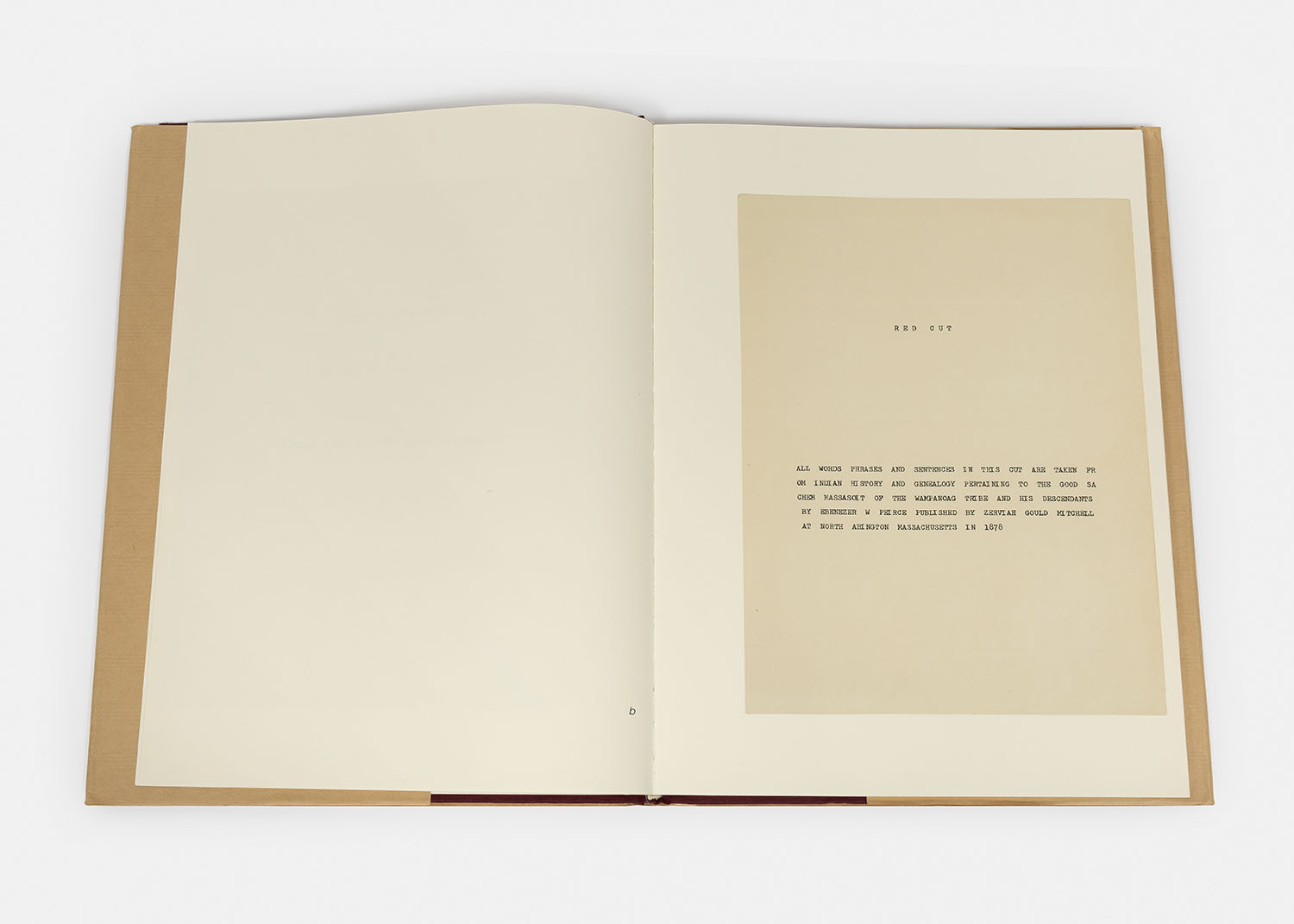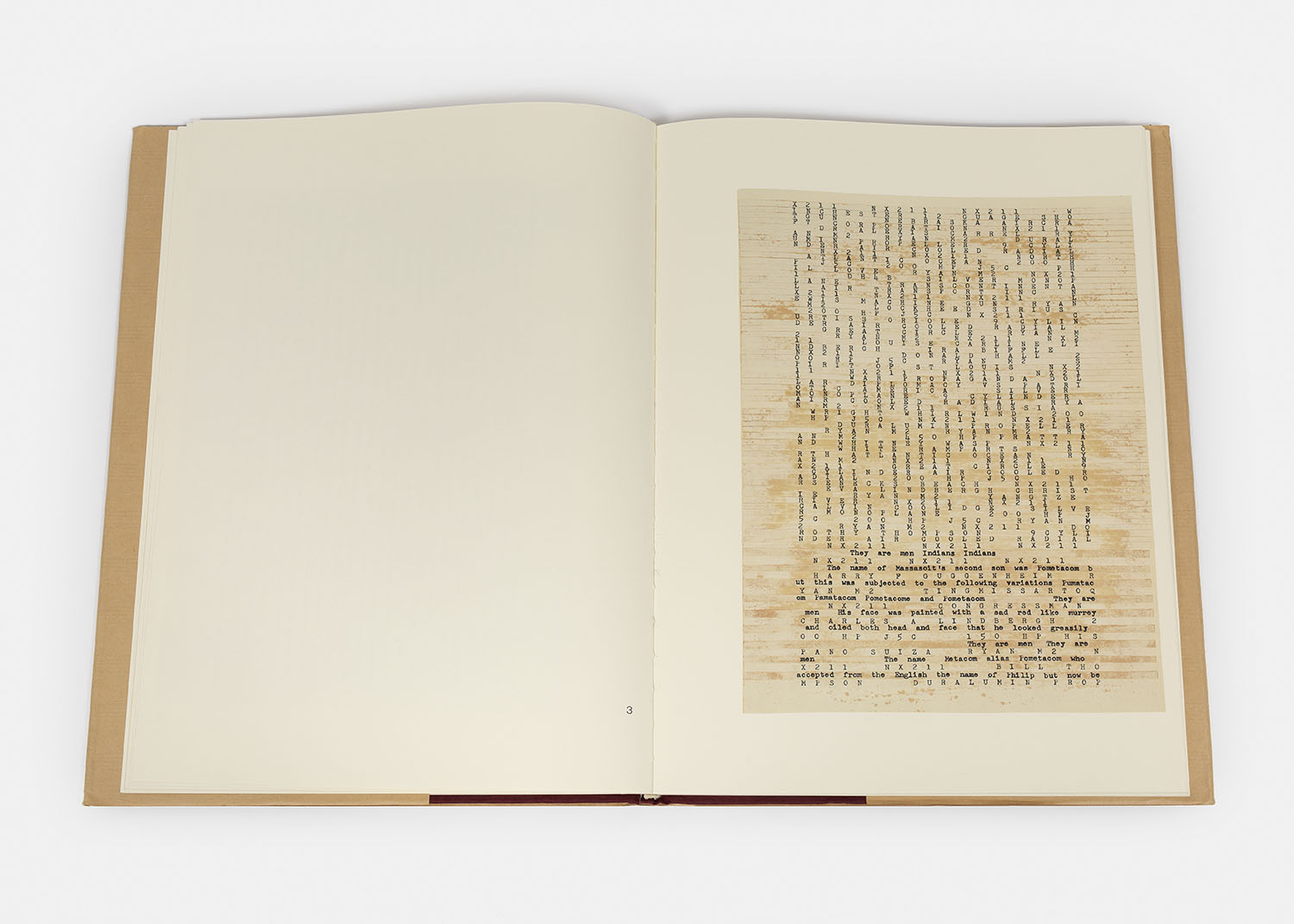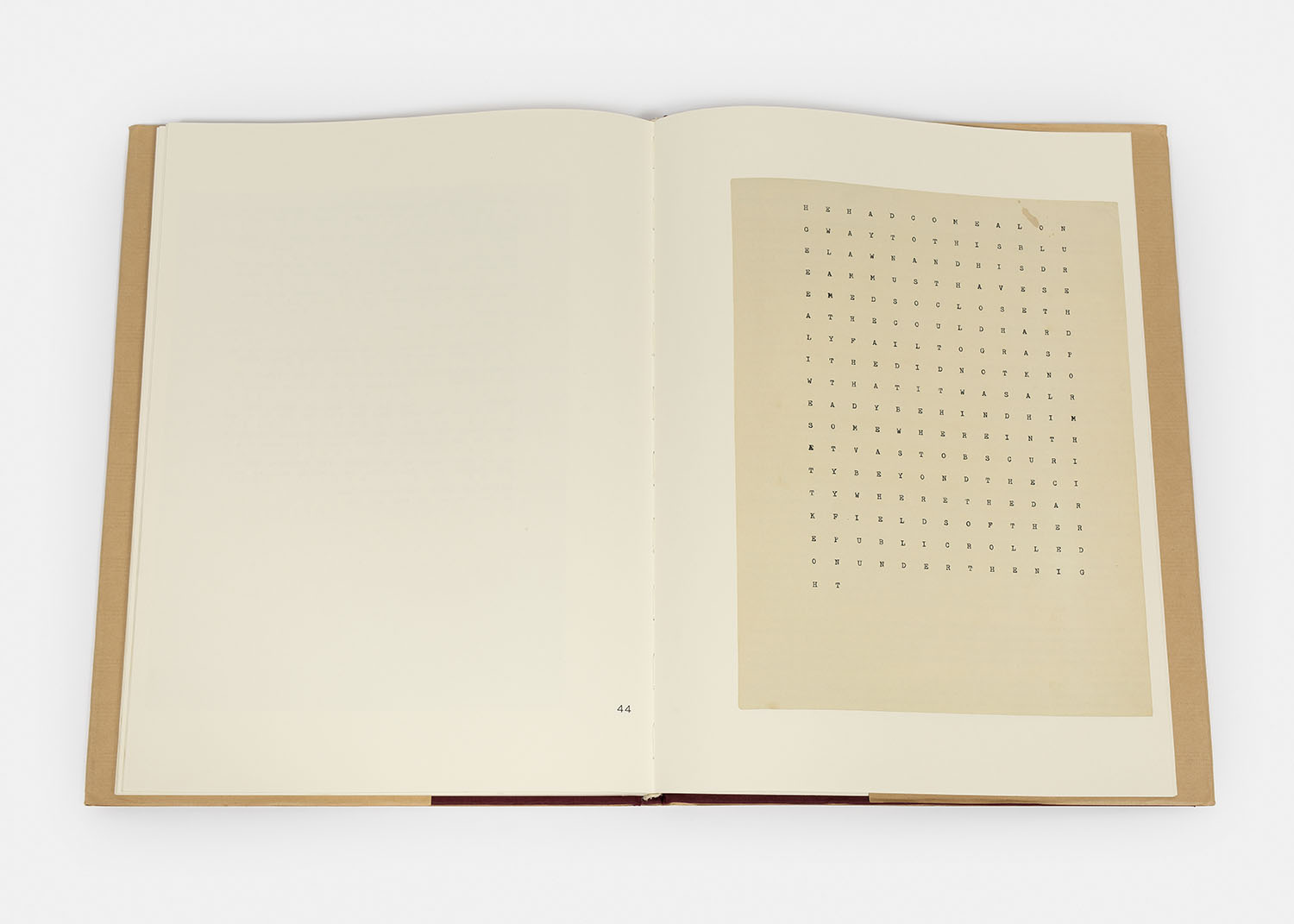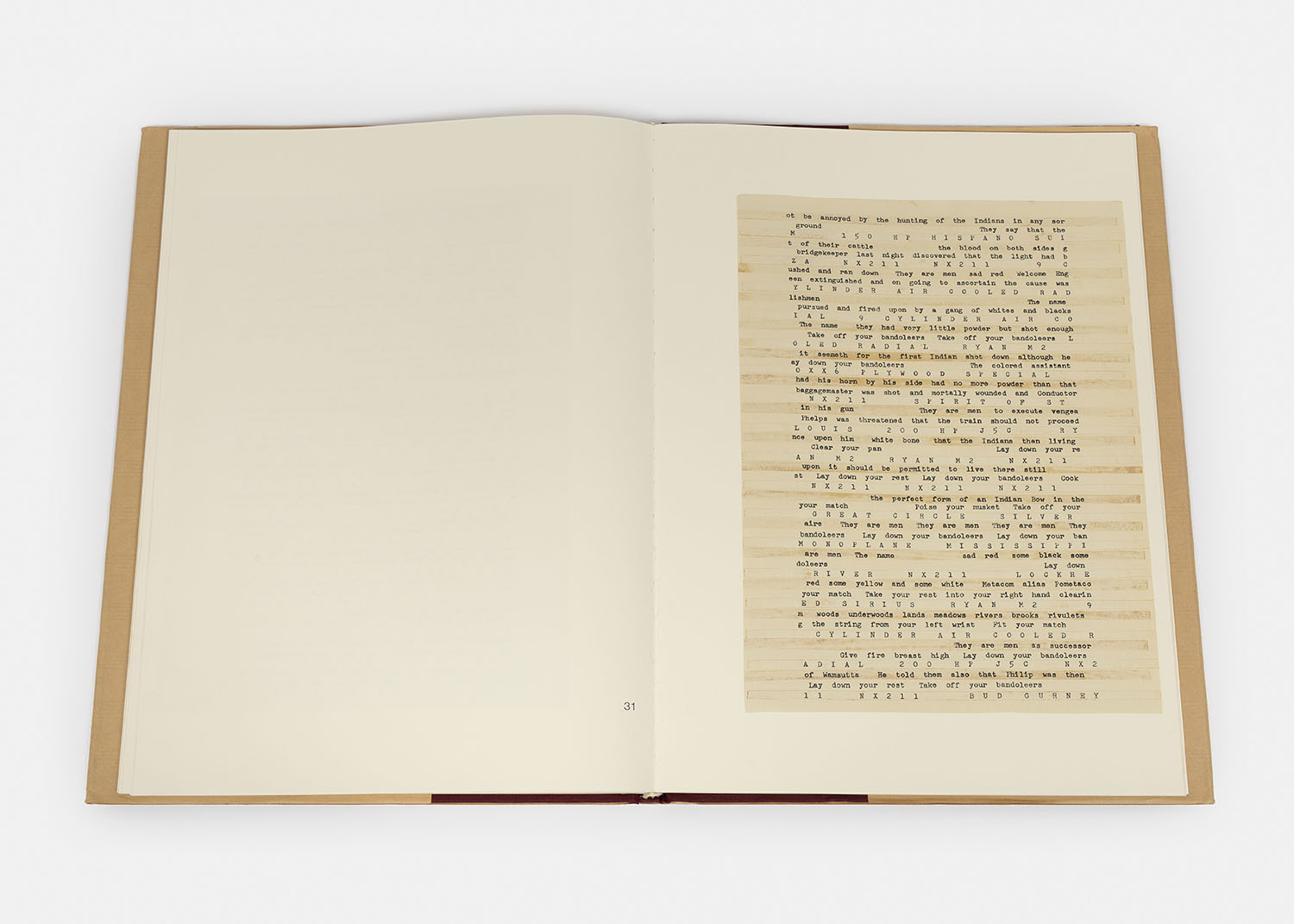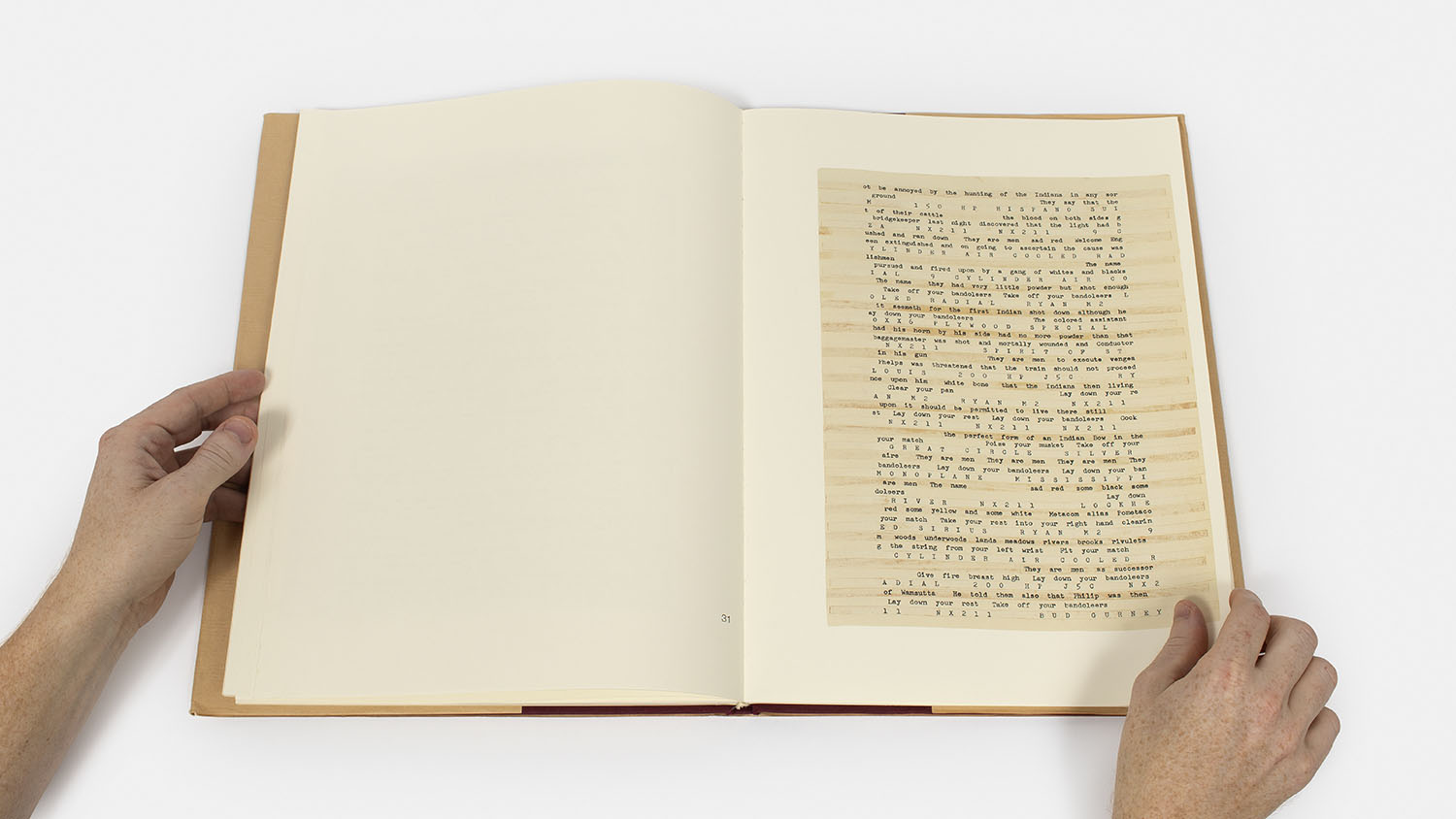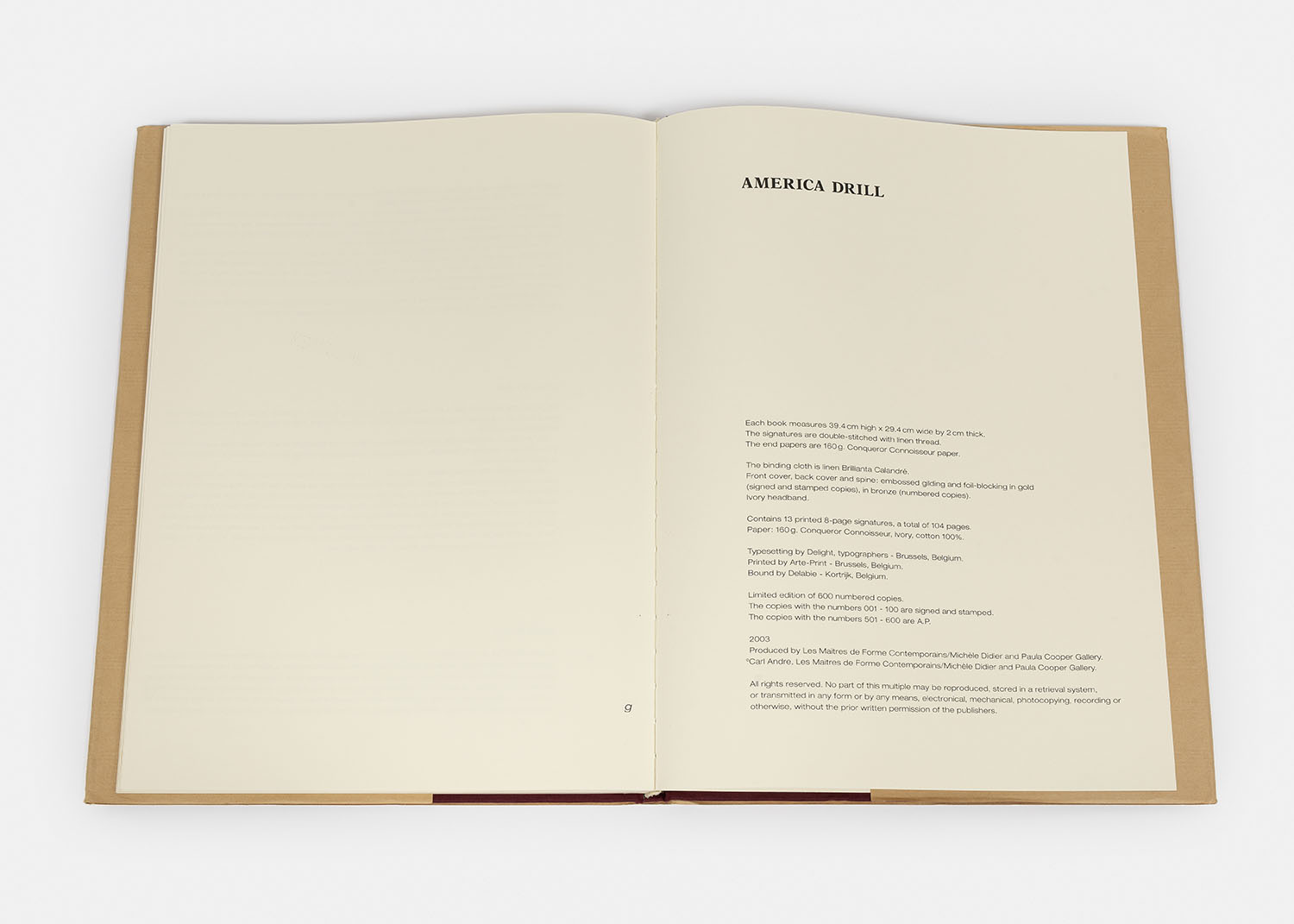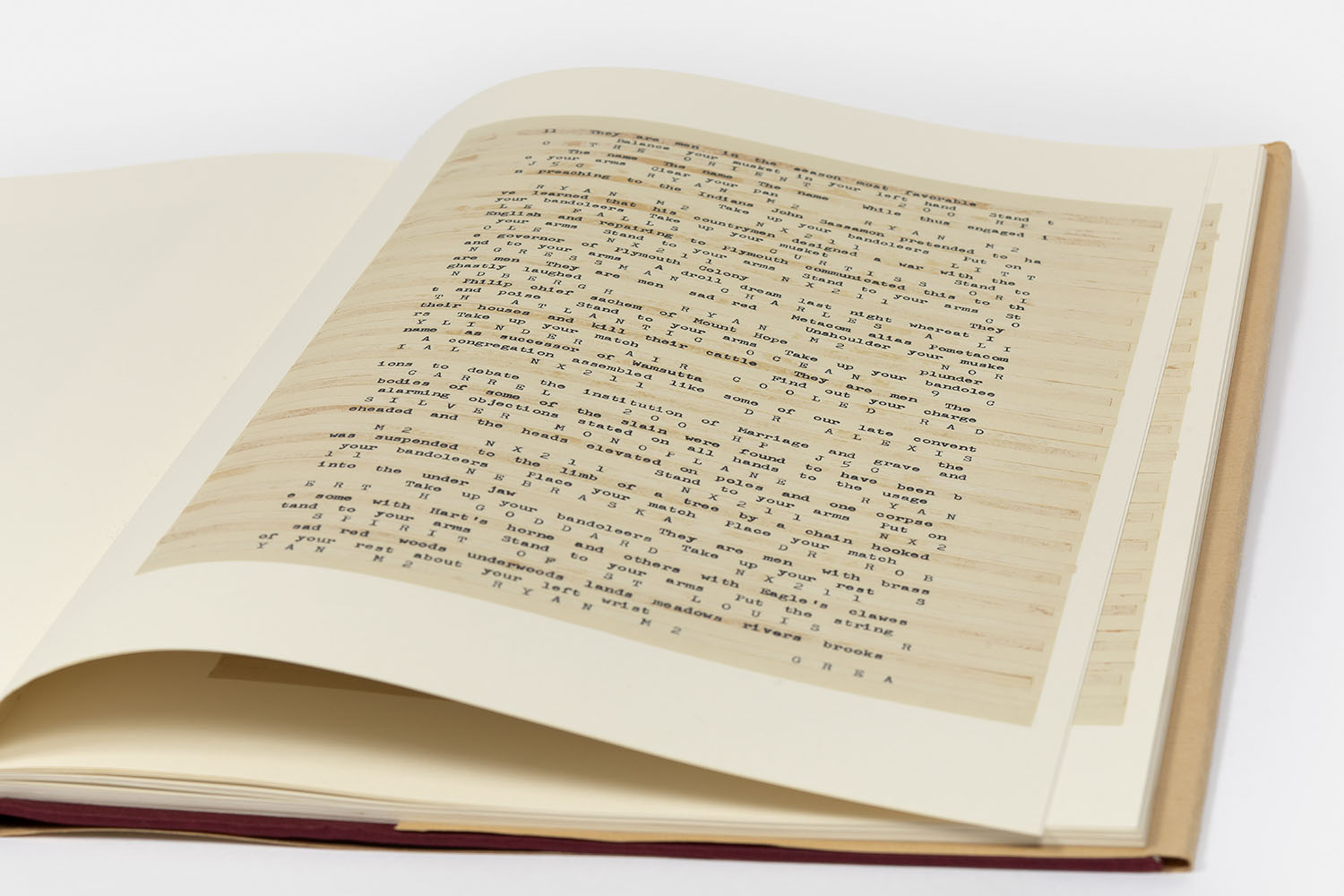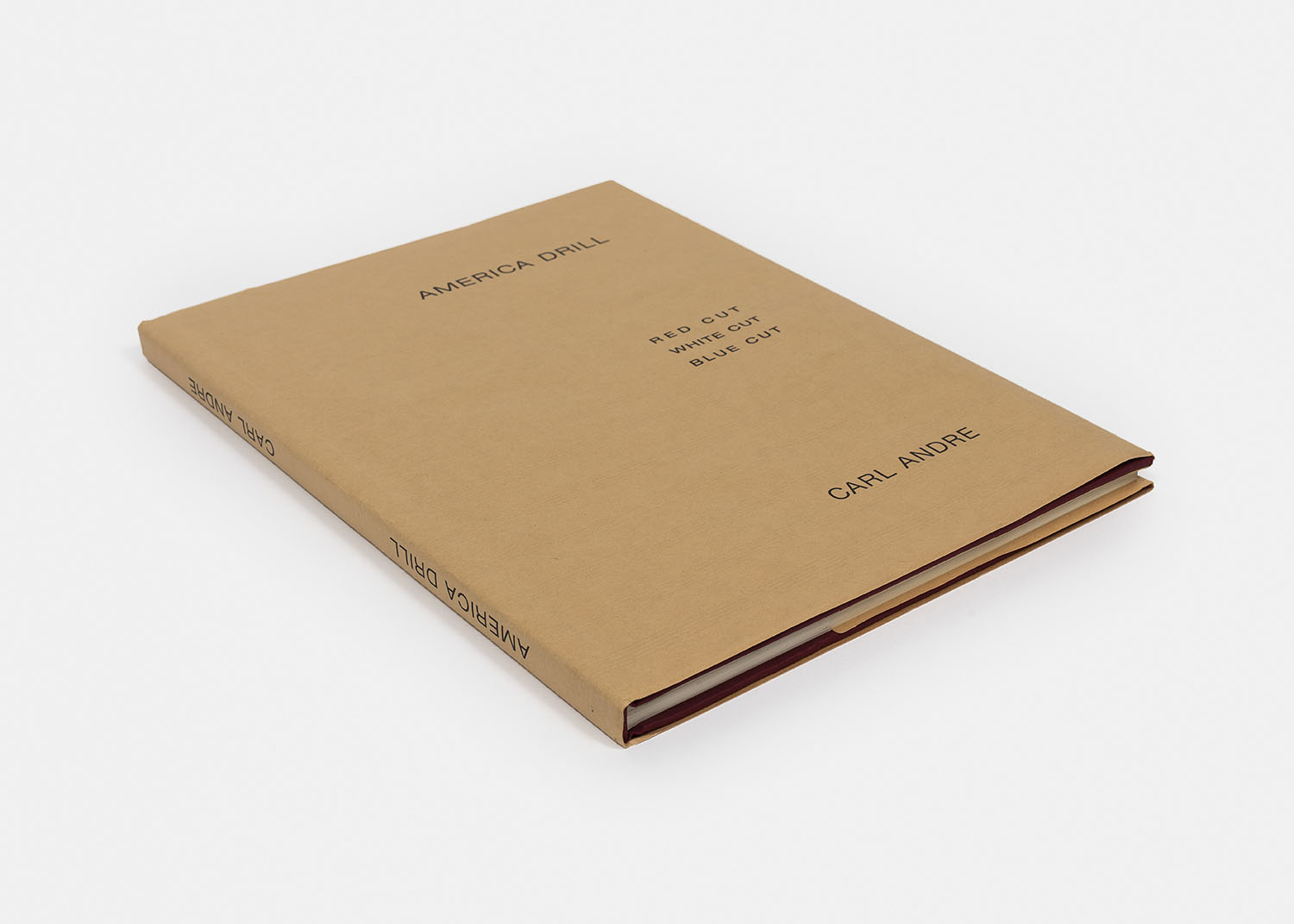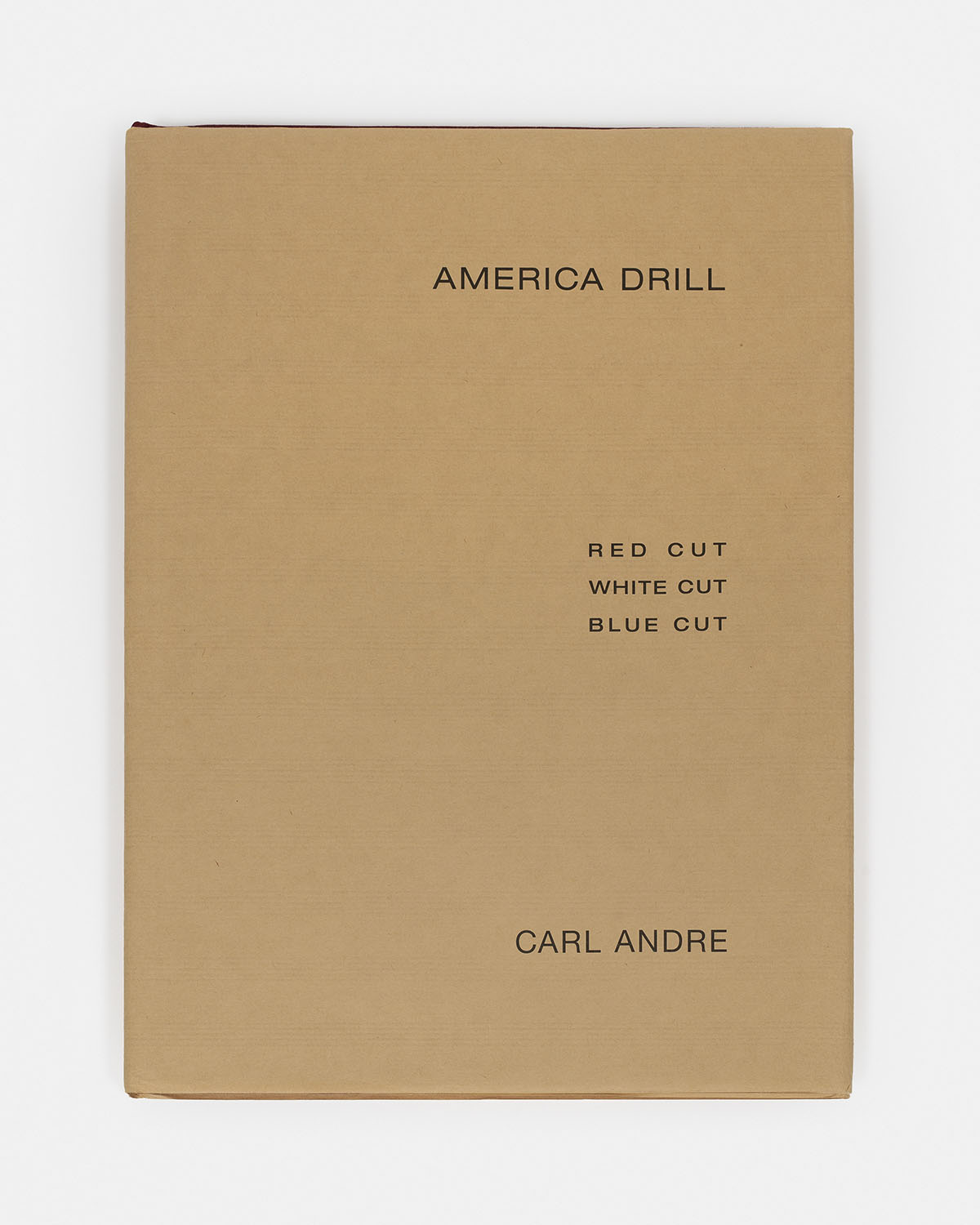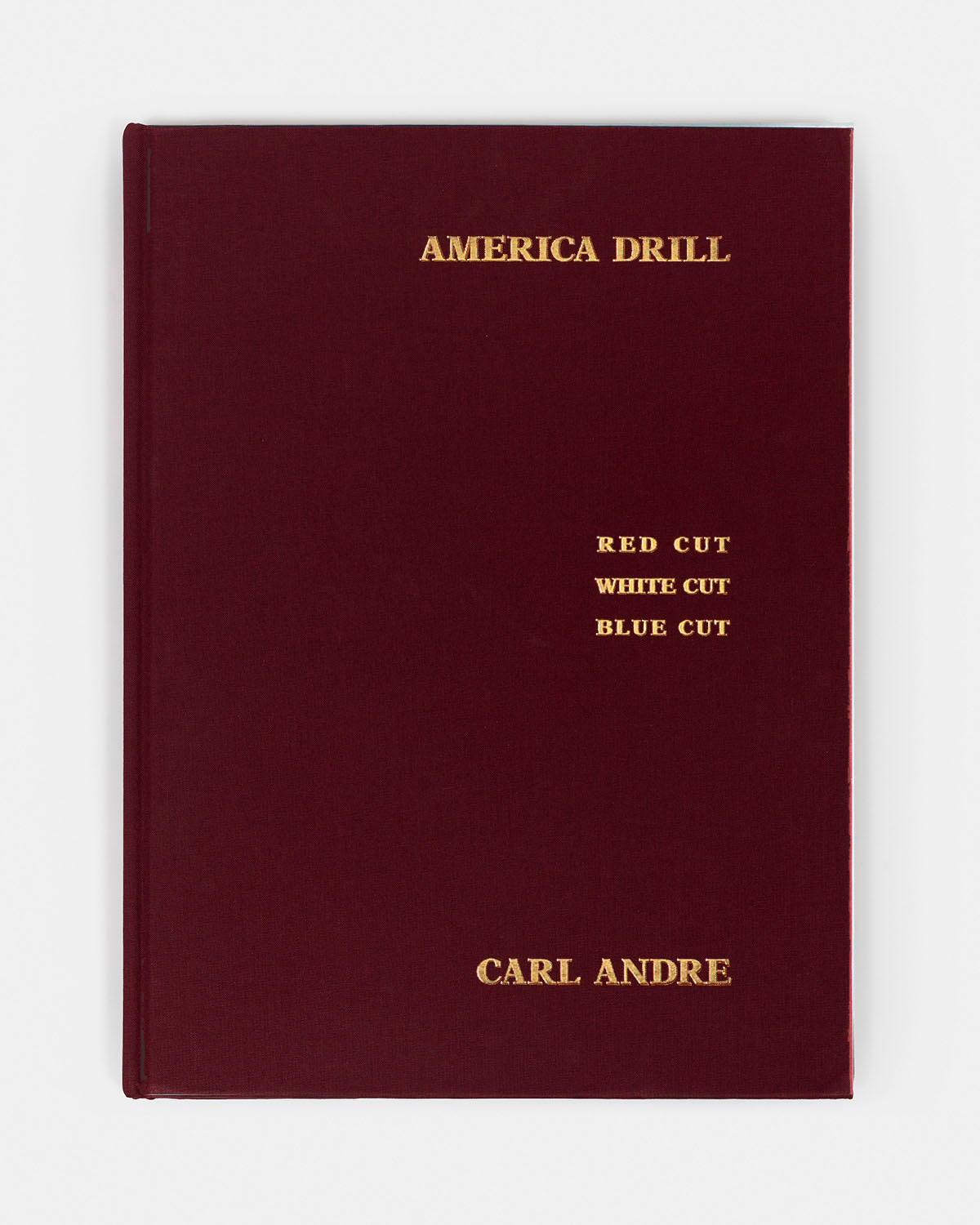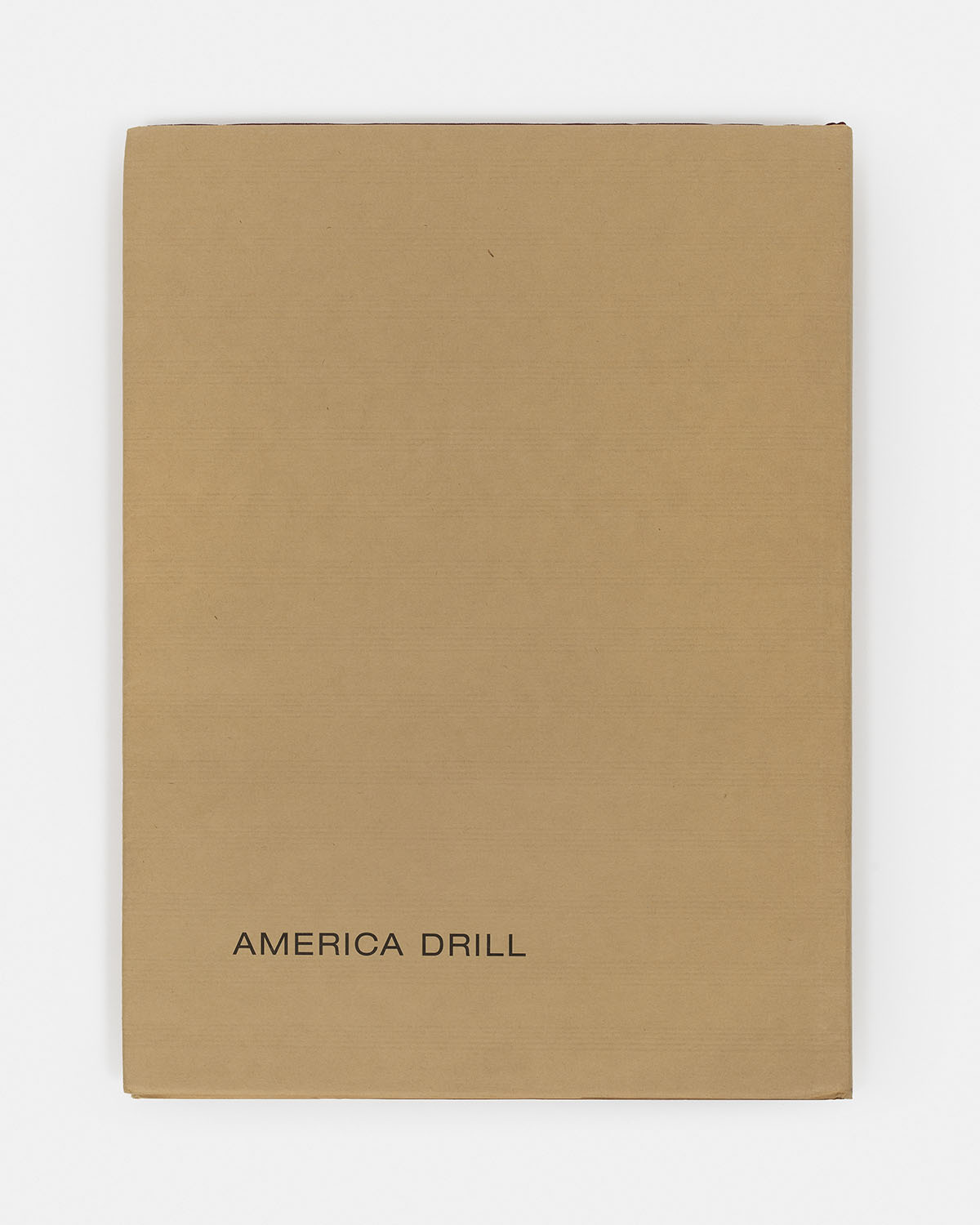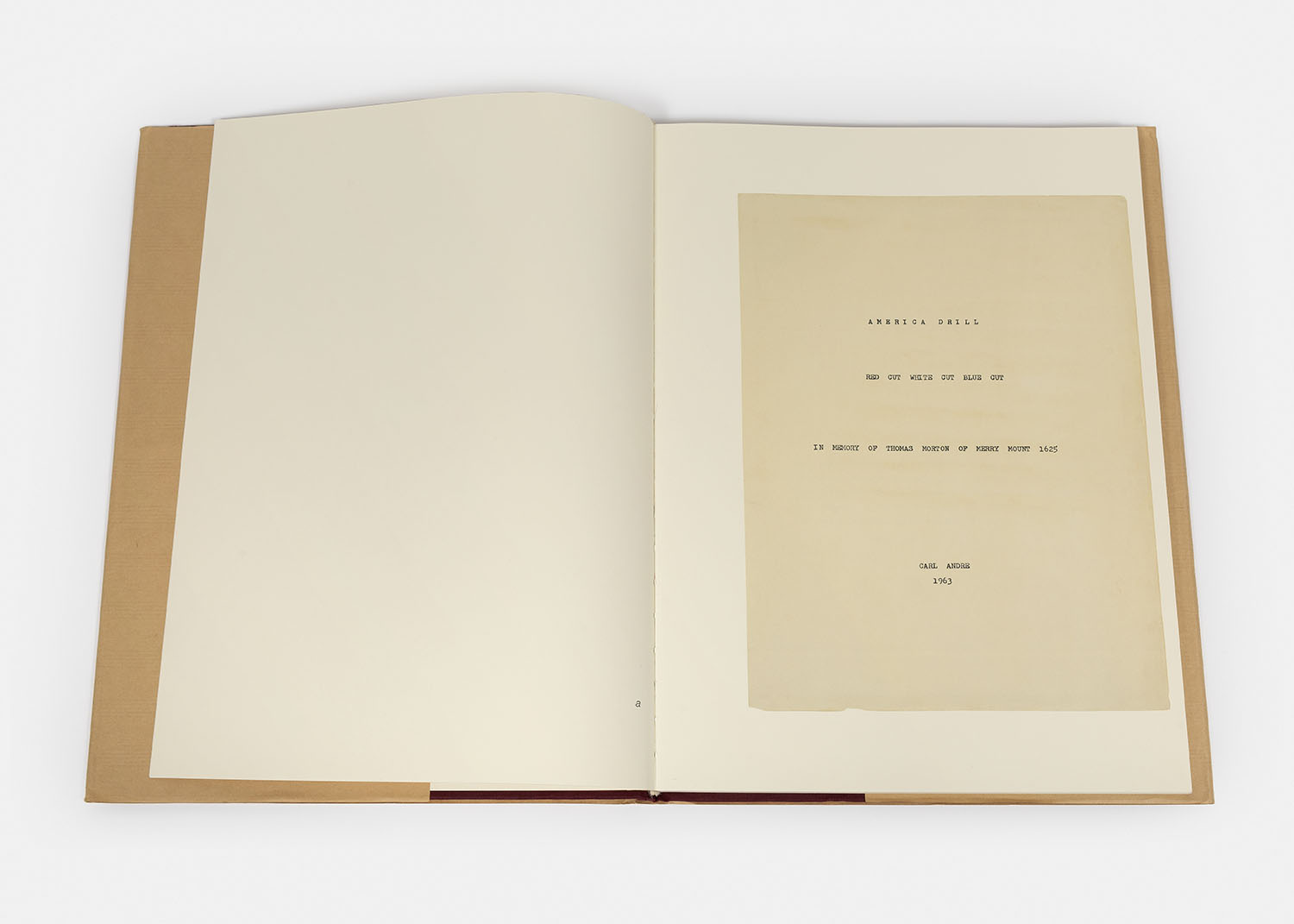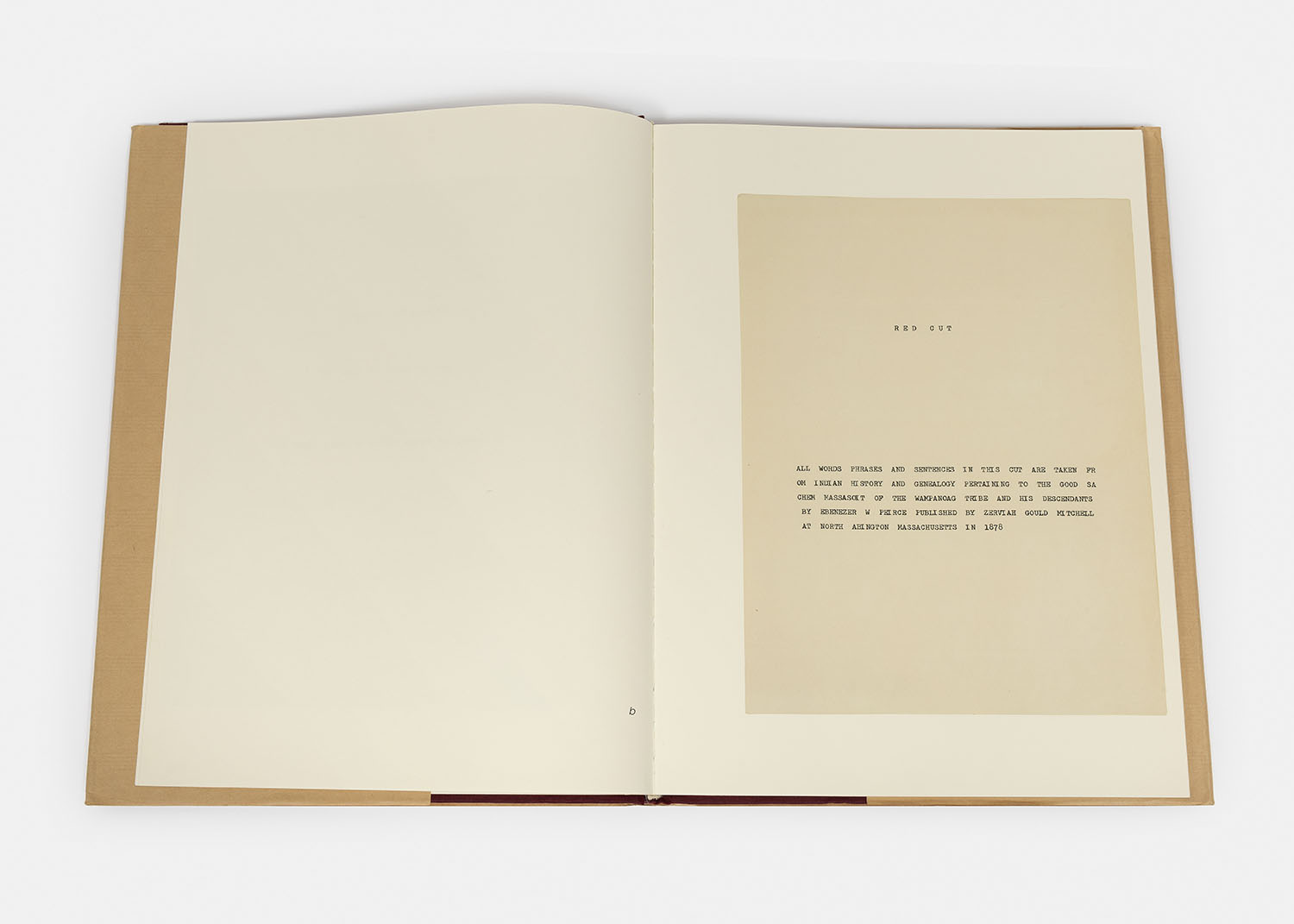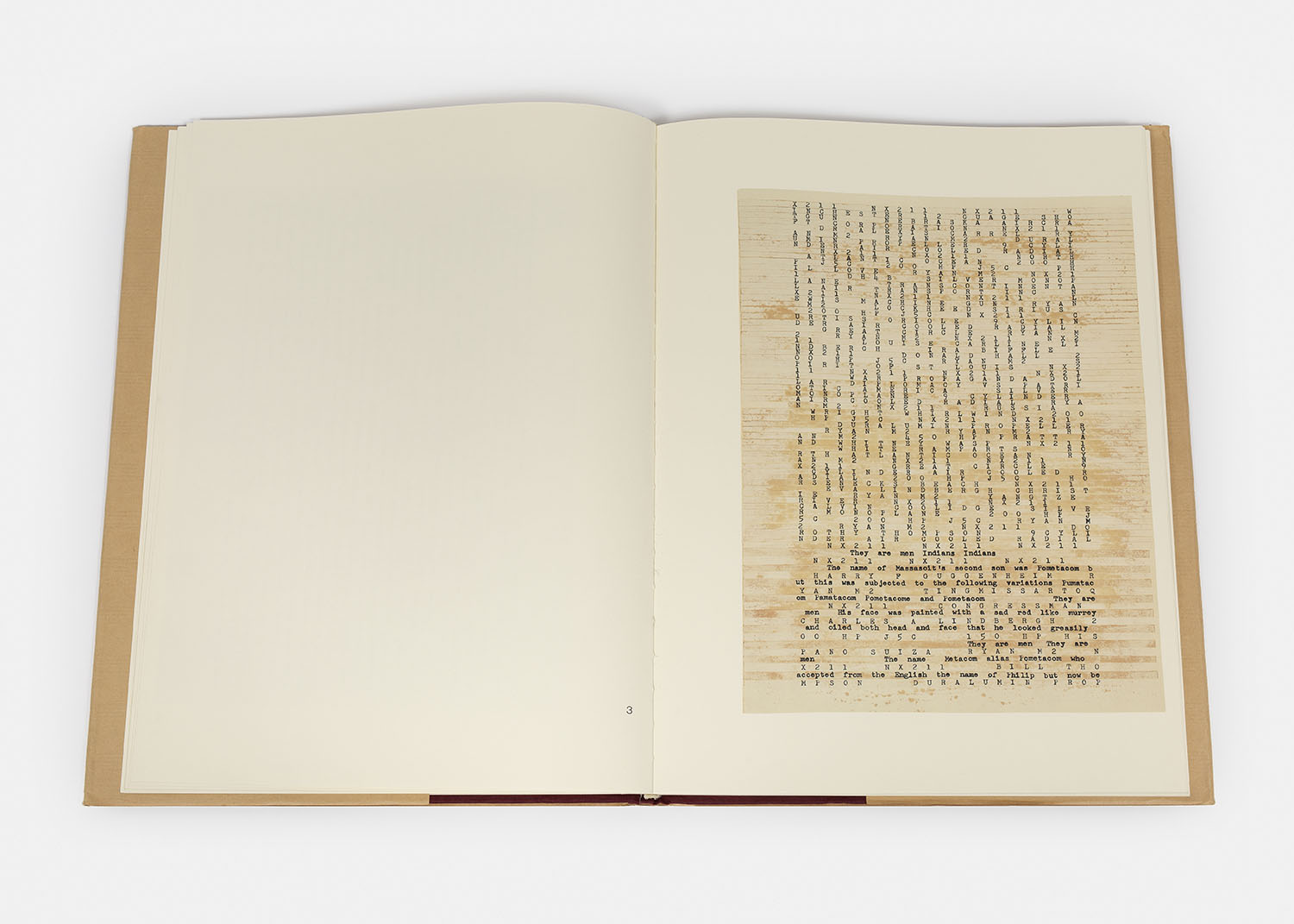Carl Andre America Drill
Specifications
Book, 39.4 x 29.4 cm, 104 pages
Printed on 160g Conqueror Connoisseur Ivory paper, cotton 100%
Signatures are double-stitched with linen thread
Ivory coloured headband
The binding cloth is linen Brillianta Calandré
Front cover, back cover and spine: embossed gilding and foil-blocking in gold (numbered, signed and stamped copies), in bronze (numbered copies)
Covered by a dust jacket
Printed by Arte-Print
Bound by Delabie
Production
Edition of 100 numbered, signed and stamped copies, 400 numbered copies and 100 artist's proofs
Produced and published by Les Maîtres de Forme Contemporains (mfc-michèle didier) & Paula Cooper Gallery in 2003
©2003 Carl Andre and mfc-michèle didier & Paula Cooper Gallery
NB: All rights reserved. No part of this edition may be reproduced in any form or by any means without written permission of the artist and the publisher.
Taking a look at the poetic work of Carl Andre today reveals the importance of this activity within his whole work, as Carl Andre started writing poems at the age of nine, long before becoming the great Minimal artist that we all know.
America Drill dated from 1963, is composed of excerpts from three fundamental texts of American History intertwined and entitled respectively Red Cut, White Cut and Blue Cut.
Red Cut: Excerpts from Ebenezer W. Pierce, Indian History and Genealogy pertaining to the good Sachem Massasoit of the Wampanoag Tribe and his Descendants (1878).
White Cut: Excerpts from Ralph Waldo Emerson, American Indian History and Newspapers (1820-1824 and 1838-1841).
Blue Cut: Excerpts from Charles A. Lindberg, We (1927) and from Kenneth S. Davis, The Hero Charles A. Lindberg and the American Dream (1959).
The artist considers America Drill as "a long poem the subject of which is tree racial tragedies: the tragedy of territory as property – the tragedy of person as property – the tragedy of everything as property."
These texts were typed by Carl Andre, who afterwords made them cut out in strips, and resticked on another sheet of the same paper. The artist inserted the strips according to the Gödel code. Therefore, at the beginning of the book, the reading of one of the paragraphs is carried out line after line. After that, every two lines, and then, every three lines.
The text doesn't present any punctuation. The typographical choice of certain excerpts varies from lower case to upper case.

